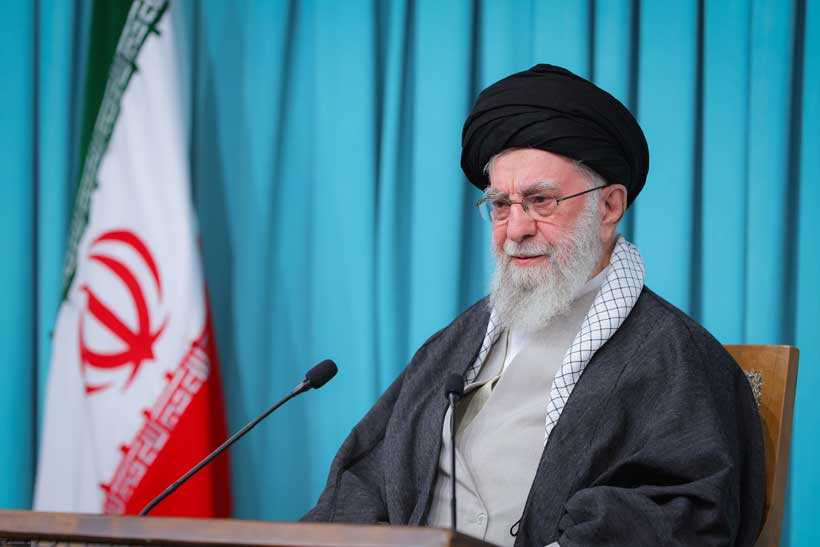Iran is on the brink of a severe economic downturn, with analysts warning of a simultaneous recession and hyperinflation following the snapback of United Nations sanctions. These measures reinstated on September 28 came after talks collapsed over Tehran’s nuclear and ballistic missile programmes.
Diplomatic efforts remain theoretically open, but Supreme Leader Ayatollah Ali Khamenei has rejected U.S. President Donald Trump’s offer for a new deal. Iranian officials claim Washington, its Western allies, and Israel are using sanctions to fuel unrest and threaten the regime’s survival.
Inside Iran, the government is holding emergency meetings to avert economic collapse and contain public anger amid rising inflation, unemployment, and corruption. Yet, officials privately admit that “protests are inevitable”, as public frustration grows and state options dwindle.
Economic Pressures Mount
The return of global sanctions is delivering fresh shocks to Iran’s already fragile economy. The rial currency has plummeted to 1.1 million per U.S. dollar, down from 920,000 in August. Inflation is estimated at 40–50%, eroding household purchasing power and investor confidence.
According to the World Bank, Iran’s economy once projected to grow modestly is now expected to contract by 1.7% in 2025 and 2.8% in 2026. The oil sector, long Tehran’s economic lifeline, is under renewed threat.
Although China remains Iran’s largest oil buyer, sanctions could force Beijing to cut imports or demand steeper discounts to avoid confrontation with Washington. Each dollar lost in oil prices translates to roughly $500 million in annual revenue losses for Iran.
Economist Umud Shokri warns the effects will be “severe and multifaceted,” deepening Iran’s “structural and financial vulnerabilities” as trade networks collapse and oil exports shrink.
Resistance Economy: A Fading Strategy
Iran’s leadership is doubling down on its so-called “resistance economy” promoting self-sufficiency and closer trade with China, Russia, and regional allies. Both Moscow and Beijing have reaffirmed support for Iran’s right to peaceful nuclear energy, condemning recent U.S. and Israeli strikes on Iranian nuclear sites.
However, these partnerships offer limited economic relief. Barter trade, restricted financial channels, and sanctions on Iran’s banks continue to stifle liquidity and limit growth. Analysts say such strategies might help Tehran survive in the short term, but cannot sustain a population of 92 million amid growing isolation.
Hardship and Public Discontent
Ordinary Iranians are bearing the brunt. Real wages are collapsing, and essential goods from meat and rice to housing and utilities have become prohibitively expensive.
- A Tehran civil servant earning the equivalent of $300 a month said his family is “struggling to even pay rent and school fees.”
- In Shiraz, a factory worker said her family can no longer afford to buy meat “even once a month.”
These stories reflect a broader economic despair cutting across urban professionals, small traders, and rural farmers.
Officials fear that worsening living standards could trigger renewed protests similar to those seen in 2017, 2019, and 2022, when economic grievances quickly turned into political dissent.
Oil and Energy: Iran’s Fragile Lifeline
Despite sanctions, oil remains Tehran’s main revenue source, making up about 25% of GDP in 2024. Yet, renewed restrictions on banking and shipping threaten to cripple this sector.
If China under U.S. pressure scales back purchases, Iran’s export capacity could collapse, triggering a currency spiral and worsening energy shortages domestically. The government’s ability to pay public sector wages and import basic goods would then come under strain, risking a full-blown economic implosion.
Diplomatic Fallout
The collapse of nuclear negotiations has isolated Tehran further, while Israel’s recent strikes on Iranian nuclear sites have escalated tensions.
While Russia and China continue to provide diplomatic cover, neither is willing to shoulder Iran’s economic burdens indefinitely. Without a diplomatic breakthrough, Iran risks becoming a pariah economy, heavily dependent on a handful of partners and cut off from international finance.
Trump’s administration, meanwhile, views the sanctions as leverage for a stronger deal, though the current escalation makes renewed dialogue increasingly unlikely.
Implications
Domestic Instability: Rising inflation, unemployment, and social inequality could spark widespread protests, challenging the clerical establishment’s control.
Economic Contraction: Continued sanctions will shrink Iran’s GDP and accelerate currency collapse, potentially leading to hyperinflation.
Regional Fallout: Iran’s economic decline may destabilize neighboring economies, disrupt energy markets, and fuel proxy conflicts as Tehran seeks external distractions.
Diplomatic Stalemate: Without flexibility from either Tehran or Washington, the nuclear impasse could deepen, making future diplomacy harder and more polarized.
Analysis
Iran’s economy is entering what could be its most dangerous phase since 2018, when U.S. sanctions first shattered its oil revenue base. The snapback of U.N. sanctions now globalizes that isolation, eliminating the few remaining escape routes.
Tehran’s strategy of resistance through endurance may prove unsustainable. The clerical elite still prioritize survival over reform, but public patience is eroding. Economic collapse rarely topples regimes overnight yet it hollows them from within, weakening state capacity, fueling corruption, and widening social divides.
If diplomacy does not resume soon, Iran could face a prolonged stagflationary crisis trapped between sanctions, mismanagement, and political rigidity. The real danger for the Islamic Republic may not come from foreign enemies, but from its own imploding economy and disillusioned population.
With information from Reuters.


